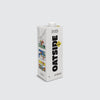
Coffee has been consumed all over the world with its history dating back to the 9th century. Here are 8 inspiring coffee legends and their stories of how they made their mark in history!
1. Kaldi
According to popular legend, Kaldi was a legendary Ethiopian goatherd who discovered the coffee plant around 850 AD. He noticed his goats were nibbling on the red fruits of a certain bush, becoming more energetic. He tasted the fruits himself, and quickly brought the berries to an Islamic monk in a nearby Sufi monastery. However, the monk disapproved, throwing them into a fire. An enticing aroma ensued, invoking them to rake up the embers and dissolving them in hot water, producing the world’s first cup of coffee.
Kaldi’s name has since inspired countless coffee shops and roasters around the world.
2. Bada Budan
Baba Budan was a 16th century Sufi saint, revered by both Muslims and Hindus. He is said to have introduced coffee to India, by bringing seven raw beans from the port of Mocha, Yemen, hiding the seeds in his beard. In those days, coffee was only exported as roasted, so no one could grow their own outside of Yemen. He planted the seeds on the slopes of Chandragiri Hills, which was later named after him as Baba Budan Hills (Baba Budangiri), on which his tomb sits.
3. Pope Clement VIII
Coffee has been around since the 9th century, when Islamic shepherds first discovered that the beans had an invigorating effect on their sheep, and soon spread around the Muslim world. When the drink was introduced to Christian Europe, it was faced with suspicion, considering the Christians had been at war with Muslims for centuries.
Things changed when coffee reached the Vatican, where most called for the pope to ban the beverage. Pope Clement VIII tried the drink for himself, and was delighted. He declared, “This devil’s drink is delicious. We should cheat the devil by baptizing it.” And the rest is history.
4. Nicolaes Witsen
Nicolaes Witsen was a Dutch statesman, who was the mayor of Amsterdam from 1682 to 1706. In 1693, he became the administrator of the Dutch East India Company (VOC), urging the Dutch governor of Batavia (now Jakarta) to obtain coffee plants at the port of Mocha in Yemen, and establishing plantations in the Dutch East Indies (now Indonesia).
This became a success, with the company supplying “Java coffee” to Europe by 1719. This was one of the first places outside of Arabia and Ethiopia, where coffee was cultivated in large volumes. Today, Indonesia remains one of the largest producers of coffee in the world, coming in at the fourth largest in 2014, and producing over 600 000 metric tons yearly.
5. Captain Gabriel-Mathieu Francois D'ceus de Clieu
This story traces back to the 1700s, when King Louis XIV of France received some coffee plants, which were kept in the royal garden. Sir Gabriel de Clieu, a French naval officer and later, governor of Guadaloupe Island in the Carribean, discovered the coffee plant on one of his visits to France. He managed to get hold of some seedlings and transported them back to the Carribean on a long and arduous journey.
This is where the very first coffee plants in the Americas originated. It turned out that the climate was more than suitable for growing coffee, and the crop quickly spread from there. This gave rise to Guadeloupe Typica, the original strains of the Typica varietal, that developed into many of the varietals commonly grown today.
6. Lieutenant Colonel Francisco de Melo Palheta
The year was 1727, when Brazil was a colony of Portugal. This was a time when coffee plants were prized assets, and each country regarded their coffee trees as a close-guarded national treasures. Hoping to grow coffee in Brazil, the Portuguese sent Lieutenant Colonel Francisco de Melo Palheta to the French Guiana, under the pretext of settling some border disputes. There, Palheta set about working his charm on the wife of the colonial governor, who presented him with a bouquet of flowers that secretly contained some coffee seedlings.
Back home in Brazil, Palheta began cultivating coffee, and production soon spread across the country, turning Brazil into one of the world’s largest coffee producers today. This is also the name that served as inspiration for our original name, Papa Palheta.
7. King Louis XV of France
“What would life be without coffee?” King Louis XV of France is said to have asked. “But, then, what is life even with coffee?” King Louis XV was an avid coffee drinker, to the point where he grew his own coffee in the greenhouses on the Versailles Palace grounds, even going on to picking, roasting and grinding them himself. He enjoyed serving his own coffee to guests of the Palace.
8. Ludwig van Beethoven
Ludwig van Beethoven, acclaimed German composer and pianist, remains one of the greatest musical geniuses of all time. He was also remarkably fastidious about one thing – his coffee. He always prepared his own coffee, meticulously counting exactly 60 beans and grinding them. He brewed with what was described as a glass contraption. His biographer and friend Anton Schindler once remarked, “coffee seems to have been the one indispensable item in his diet.”
What other coffee legends do you know of that are not on this list? Share with us in the comments below!

















